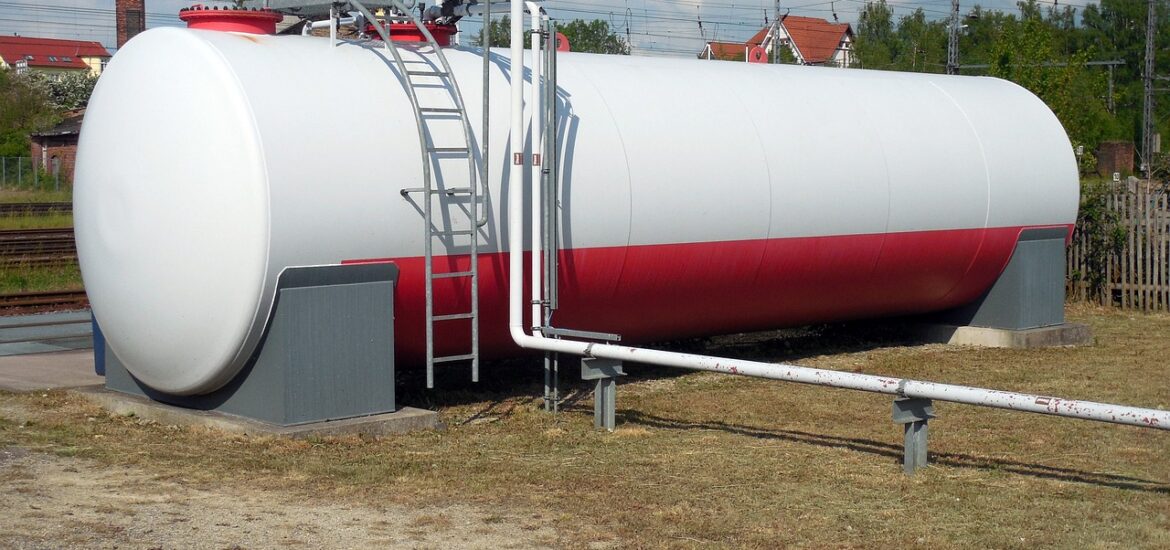Cleaning an old overhead fuel tank can be a daunting task, but it is a necessary one. Over time, fuel tanks can accumulate sediment, rust and other contaminants, which can lead to blockages, corrosion and ultimately, failure. Failure to properly clean an overhead fuel tank can result in serious consequences, including environmental damage, fire or even explosion.
In this article, we will provide a step-by-step guide on how to clean an old overhead fuel tank.
Step 1: Safety First!
Prioritizing safety is crucial before starting any fuel tank cleaning project. This is because fuel tanks may contain flammable liquids and gases that can pose a considerable threat if not handled correctly. To ensure safety, here are a few safety measures to consider before commencing the cleaning process:
- Make sure you wear gloves, eye protection and respiratory protection that are appropriate for the task. This is known as personal protective equipment (PPE).
- To prevent the accumulation of dangerous vapors, please ensure that the area is properly ventilated.
- Ensure no smoking or open flames are present in the area.
Step 2: Drain The Tank
Start by emptying it of any remaining fuel. This can be done by opening the tank’s drain valve and letting the fuel flow into a proper container or by using a fuel transfer pump. Ensure that you dispose of the fuel according to the local regulations.
Step 3: Remove Debris
After emptying the fuel from the tank, you should remove any debris that has accumulated inside it. You can do this by using a vacuum truck or by manually scooping or shoveling the debris. It’s crucial to eliminate all debris from the tank to avoid blockages and corrosion.
Step 4: Pressure Wash The Inside Of The Tank
Once the tank is cleared of debris, use a pressure washer with appropriate detergent to wash the tank’s interior. To avoid any harm to the tank, set the pressure washer at a low pressure and be mindful of any electrical components or wiring in the tank.
Step 5: Inspect For Damage
It is crucial to examine the tank for any harm after using a pressure washer inside it. Damage such as rust, fractures, or other faults that could jeopardize the tank’s strength may be present. If any damage is discovered, it is essential to repair or substitute the tank before putting it back into operation.
Step 6: Neutralize Any Remaining Fuel Residue
Even after cleaning and pressure washing, there may be residual fuel remaining inside the tank. This fuel residue can be neutralized by using a suitable fuel tank cleaner. The cleaner should be added to the tank according to the manufacturer’s instructions, and left to sit for the recommended amount of time. After the cleaner has been left to sit, the tank should be drained and rinsed thoroughly with water.
Step 7: Reinstall Tank Components
After the tank has been cleaned, inspected and neutralized, it is time to reinstall any components that were removed during the cleaning process. This can include valves, gauges, and pumps. Care should be taken to ensure that all components are properly installed and secured to prevent leaks.
Step 8: Refill The Tank
Once all components have been reinstalled, it is time to refill the tank with fuel. It is important to use a high-quality fuel that meets the specifications of the tank and is appropriate for the intended use.
Consulting A Tank Provider For Proper Cleaning Of Your Old Overhead Fuel Tank
Cleaning an old overhead fuel tank is a complex process and should only be attempted by experienced professionals. If you are unsure of how to properly clean your overhead fuel tank, contact a professional tank provider for advice and assistance. They can provide the necessary equipment, safety gear, chemicals, and expertise needed to ensure the safe and effective cleaning of your old overhead fuel tank.
Or if you need to replace your tank, a tank provider can help you find and install a new, high-quality overhead fuel tank that meets your needs.
We recommend you to purchase an overhead fuel tank from Mills Equipment Co. Inc Denver as they offer the best quality overhead fuel tanks at competitive prices. They also provide excellent customer service and assistance in finding the right tank for your needs. So make sure you check them out today.
Final Thoughts
Cleaning an old overhead fuel tank is a serious job that requires the proper safety precautions, equipment and expertise. If you are unsure of how to properly clean your overhead fuel tank, we recommend that you contact a professional tank provider for assistance. Following the steps outlined above will help ensure that your overhead fuel tank is properly cleaned and ready to be put back into service.
And with the right provider and knowledge, you can rest assured that your overhead fuel tank will be safe and reliable for years to come. Thank you for reading.

